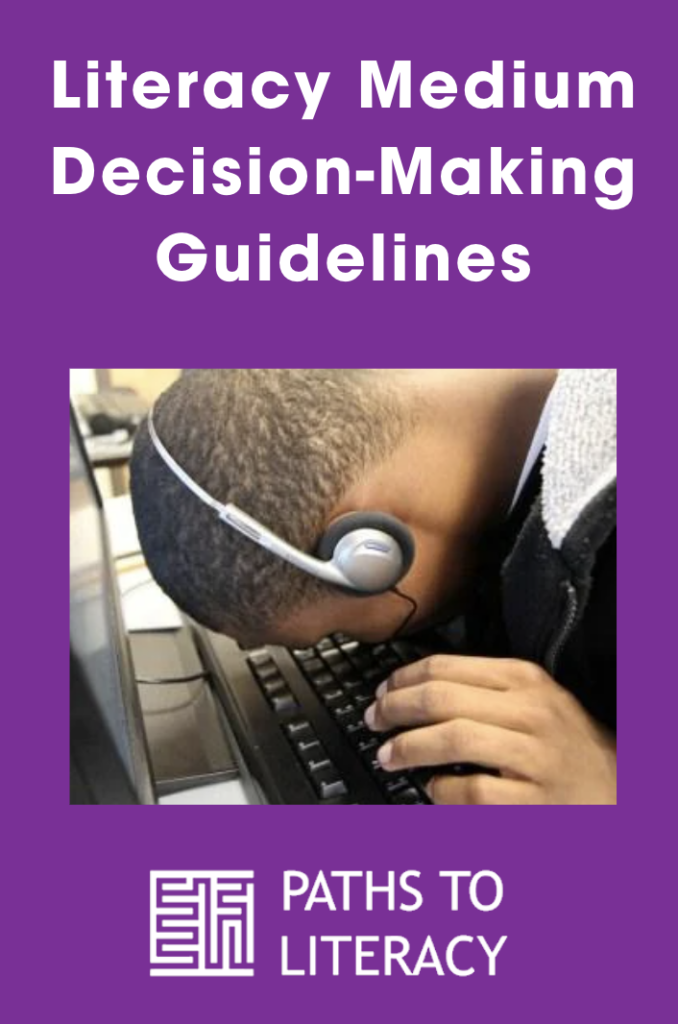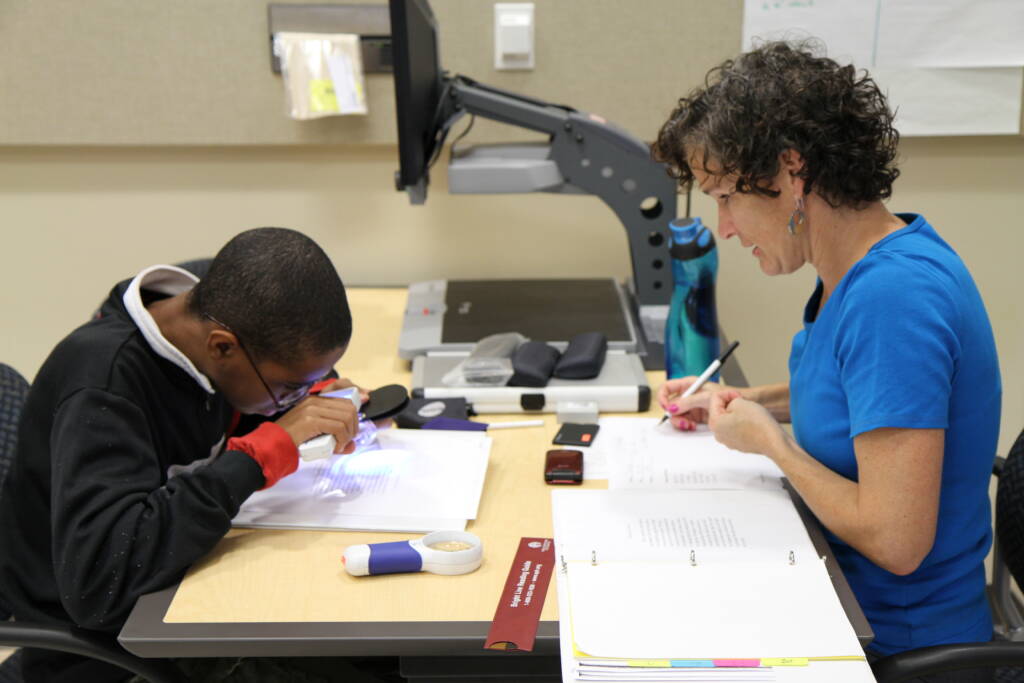TSBVI is committed to helping ensure that all students are instructed in their appropriate literacy media. Literacy instruction needs to be based on reliable data, consistent with IDEA-B regulations. Here are guiding principles that we believe should be considered in the evaluation of literacy medium for each student:
- To be an efficient reader and to prepare for a competitive work force, individuals with low vision or blindness must acquire a combination of literacy tools to use in a wide variety of settings and situations. These tools might include hard-copy print, text that can be manipulated on electronic devices as print, braille or audio, braille (paper or electronic), audible materials, and any combination of these. Students should receive explicit instruction and adequate practice with all relevant literacy tools.
- Literacy involves a complex interaction among multiple skill sets, including visual skills for print and tactile skills for braille. For students with visual impairment who struggle with literacy, it can be difficult to determine whether the cause is primarily related to visual or tactile issues, or reading problems related to word identification, comprehension, and/or fluency. Evaluation of literacy skills and decisions regarding literacy media should be a collaborative process involving a certified teacher of students with visual impairments, a qualified reading teacher, and sometimes, a certified reading specialist.
- According to IDEA (300.304(b)(1)), local districts must use a variety of assessment tools and strategies to gather relevant functional, developmental, and academic information needed to develop an individualized educational program. IDEA (300.304(b)(2)) specifies that no one evaluation tool should be used as the entire basis for educational programming considerations.
- For students with visual impairments, many factors must be considered in evaluating the most efficient tools for literacy. Factors include:
- Visual diagnosis and prognosis
- Functional use of vision, including fatigue and stamina during visual tasks
- Evaluation in the use of assistive technology
- Documentation of reading instruction using braille or print and including use of prescribed optical vision devices where indicated
- Adjustment of environmental factors such as lighting and ergonomics
- Documented progress in literacy skills, including reading fluency
- Once effective accommodations are identified, they must be provided in both learning and testing environments (300.323(d)(II)(ii)). They should be based on evaluation of the student’s disability, and documented in the individualized education program. The Texas Education Agency states that “…accommodation needs related to a disability or disabling condition … are intended to provide students effective and equitable access to grade-level or course curriculum and assessments” 1 Therefore, use of documented accommodations in literacy activities should be included in an evaluation of a student’s literacy skills.
1 From the Texas Education Agency Accommodation Resources website: https://tea.texas.gov/student-assessment/testing/student-assessment-overview/accommodation-resources
This article was originally published by Texas School for the Blind and Visually Impaired (TSBVI) and is reprinted here with permission.





